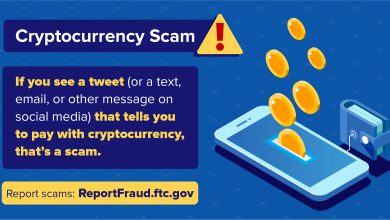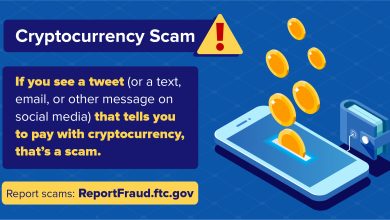Recovering Stolen Cryptocurrency: A Practical Guide

- Understanding the Risks of Storing Cryptocurrency
- Steps to Take Immediately After Discovering a Theft
- Utilizing Blockchain Analysis Tools for Recovery
- Working with Law Enforcement and Legal Authorities
- Tips for Preventing Future Cryptocurrency Theft
- Case Studies of Successful Cryptocurrency Recovery
Understanding the Risks of Storing Cryptocurrency
When it comes to storing cryptocurrency, it is crucial to understand the risks involved. Cryptocurrency is a digital asset that is stored in a digital wallet, which can be vulnerable to hacking and theft. It is essential to take precautions to protect your cryptocurrency from being stolen.
One of the main risks of storing cryptocurrency is the potential for hacking. Hackers can gain access to your digital wallet through various means, such as phishing scams, malware, or social engineering. Once they have access to your wallet, they can transfer your cryptocurrency to their own wallet, making it nearly impossible to recover.
Another risk of storing cryptocurrency is the lack of regulation and oversight in the industry. Since cryptocurrency operates outside of traditional banking systems, there is no central authority to turn to in case of theft or fraud. This means that if your cryptocurrency is stolen, it may be challenging to recover it.
To mitigate the risks of storing cryptocurrency, it is essential to take security measures such as using a secure digital wallet, enabling two-factor authentication, and keeping your private keys safe. Additionally, it is crucial to stay informed about the latest security threats and scams in the cryptocurrency space to protect your investment.
Steps to Take Immediately After Discovering a Theft
Upon discovering a theft of your cryptocurrency, it is crucial to act swiftly and follow the necessary steps to increase the chances of recovering your stolen funds. Here are the immediate actions you should take:
- Secure Your Accounts: Change all passwords and enable two-factor authentication on all your cryptocurrency exchange accounts to prevent further unauthorized access.
- Report the Theft: Contact the relevant authorities such as the police and file a report detailing the theft of your cryptocurrency.
- Notify the Exchange: Inform the cryptocurrency exchange where the theft occurred and provide them with all relevant details of the incident.
- Monitor Transactions: Keep a close eye on the blockchain to track any movement of your stolen cryptocurrency and gather evidence for investigation.
- Seek Professional Help: Consider hiring a professional service specializing in recovering stolen cryptocurrency to assist you in the process.
By taking these immediate steps, you can increase the likelihood of recovering your stolen cryptocurrency and holding the perpetrators accountable for their actions.
Utilizing Blockchain Analysis Tools for Recovery
When attempting to recover stolen cryptocurrency, one valuable tool that can be utilized is blockchain analysis. By using specialized tools designed for analyzing blockchain transactions, investigators can trace the movement of stolen funds and potentially identify the individuals responsible for the theft.
Blockchain analysis tools work by examining the public ledger of transactions associated with a particular cryptocurrency. These tools can help investigators identify patterns, track the flow of funds, and uncover connections between different wallet addresses. By analyzing this data, investigators can gain valuable insights into how the stolen cryptocurrency was moved and potentially identify the individuals involved.
One popular blockchain analysis tool that is commonly used for cryptocurrency recovery is Chainalysis. Chainalysis offers a range of services designed to help law enforcement agencies, exchanges, and financial institutions track and monitor cryptocurrency transactions. By leveraging the power of blockchain analysis, investigators can increase their chances of recovering stolen funds and holding the perpetrators accountable.
Working with Law Enforcement and Legal Authorities
When it comes to **recovering** stolen cryptocurrency, working with **law enforcement** and legal authorities can be crucial. These professionals have the expertise and resources to investigate **cryptocurrency** theft and potentially help **victims** recover their **stolen** funds. Here are some **tips** for **collaborating** with **law enforcement** and legal authorities:
- Report the theft to the appropriate **law enforcement** agency as soon as possible. Provide as much **information** as you can about the **incident**, including **transaction** details, **wallet** addresses, and any other relevant **evidence**.
- Cooperate fully with **law enforcement** during their **investigation**. Be **prepared** to provide additional **information** or **assistance** as needed.
- Consult with a **legal** professional who has experience in **cryptocurrency** **law**. They can help you understand your **rights** and **options** for **recovering** your **stolen** funds.
- Consider **seeking** a **court** order to **freeze** the **assets** of the **thief** or **recover** your **funds** through **legal** means.
By **working** closely with **law enforcement** and legal authorities, you can **increase** the chances of **recovering** your **stolen** cryptocurrency. Remember to **stay** **patient** and **persistent** throughout the **process**, as **recovering** **stolen** **funds** can take time and **effort**.
Tips for Preventing Future Cryptocurrency Theft
When it comes to preventing future cryptocurrency theft, there are several steps you can take to safeguard your digital assets. By following these tips, you can reduce the risk of falling victim to cybercriminals and protect your investment in cryptocurrencies.
- Use a secure wallet: Make sure to store your cryptocurrency in a reputable wallet that offers multi-factor authentication and other security features.
- Enable two-factor authentication: Add an extra layer of security to your exchange accounts and wallets by enabling two-factor authentication wherever possible.
- Keep your private keys offline: Store your private keys in a secure location offline to prevent hackers from gaining access to your cryptocurrency holdings.
- Be cautious of phishing scams: Avoid clicking on suspicious links or providing personal information to unknown sources to protect yourself from phishing scams that could compromise your cryptocurrency.
- Regularly update your security software: Keep your computer and mobile devices protected with the latest security software updates to defend against malware and other cyber threats.
By following these best practices for cryptocurrency security, you can minimize the risk of theft and protect your digital assets from cyber attacks. Stay vigilant and proactive in safeguarding your investment to ensure the safety of your cryptocurrency holdings.
Case Studies of Successful Cryptocurrency Recovery
There have been several successful cases of recovering stolen cryptocurrency, demonstrating that it is possible to reclaim lost funds in certain situations. These case studies provide valuable insights into the strategies and techniques that can be employed to recover stolen digital assets.
- Case Study 1: In one instance, a victim of a phishing scam was able to recover their stolen cryptocurrency by working with law enforcement agencies and cybersecurity experts. By tracing the transactions on the blockchain and identifying the hackers’ wallets, the victim was able to recover a significant portion of their funds.
- Case Study 2: Another successful recovery involved a victim of a SIM swapping attack who worked with their mobile service provider to regain access to their accounts. By securing their phone number and implementing additional security measures, the victim was able to prevent further unauthorized access and recover their stolen cryptocurrency.
- Case Study 3: A third case involved a victim of a malware attack who enlisted the help of a cybersecurity firm to identify and remove the malicious software from their devices. By securing their private keys and implementing multi-factor authentication, the victim was able to prevent future attacks and recover their stolen funds.
These case studies highlight the importance of taking immediate action in the event of a cryptocurrency theft, as well as the value of working with professionals to secure and recover stolen digital assets. By following best practices for cybersecurity and blockchain security, individuals can increase their chances of successfully recovering stolen cryptocurrency.



